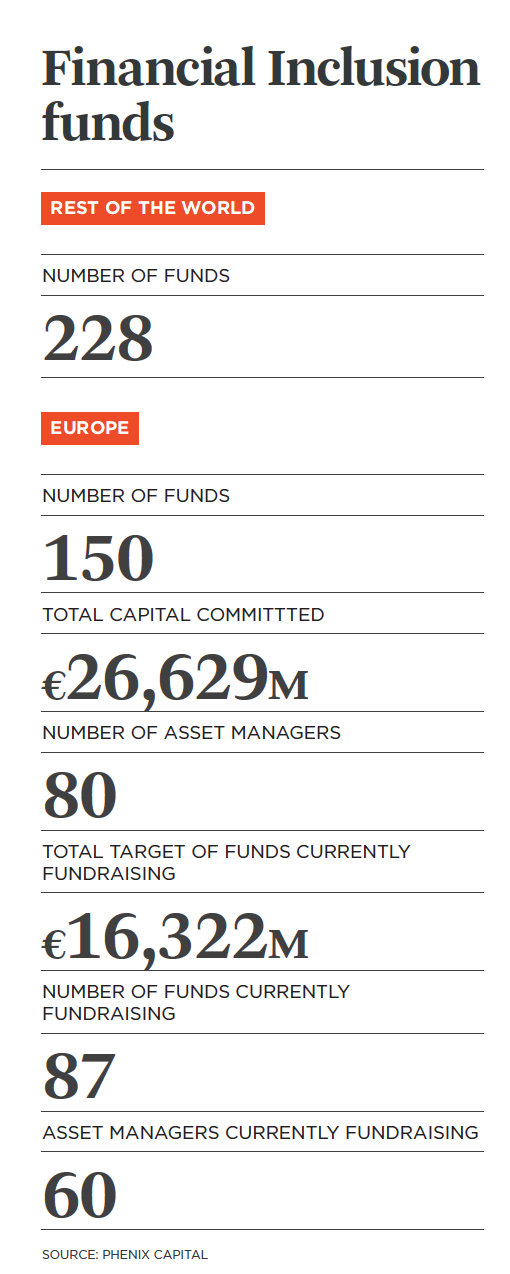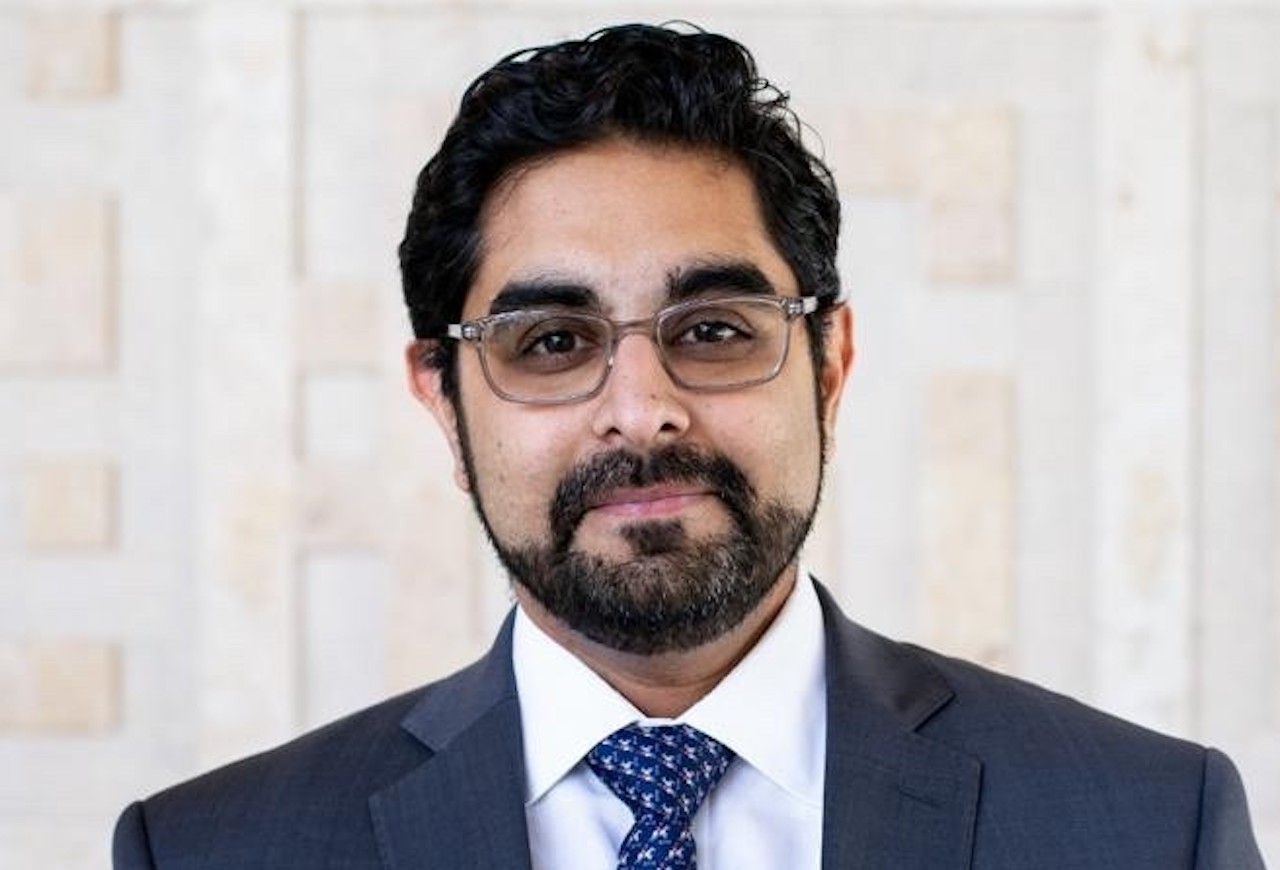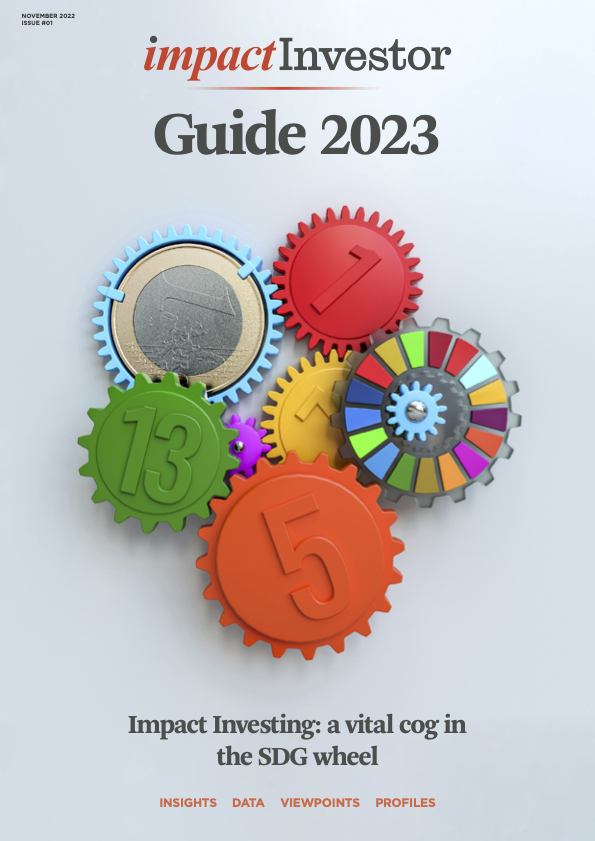Technological advances have given access to financial products to millions but bringing the hardest-to-reach ‘unbanked’ into the financial system remains the sector’s biggest challenge.

Two decades ago, investors seeking to improve access to financial services in the developing world primarily focused on support for microfinance institutions (MFIs) lending the traditional way, based on face-to-face contact with clients in an office close to the community they served.

Since then, the sector has evolved dramatically to include a range of life-transforming services such as mobile payments, online banking, and insurance.
It’s a big market with the potential to expand fast. At the end of 2021, the more than 10,000 MFIs around the world had a total gross loan portfolio (GLP) of around $187bn, with the top 100 MFIs holding around 70% of that portfolio, according to the latest Convergences’ Impact Finance Barometer.
South and South-east Asia remained by far the largest regional market, comprising 73% of borrowers, and 50% of the GLP. The Latin America and Caribbean region had a 38% share of GLP, but only 17% of borrowers. Sub-Saharan Africa, where the lack of access to financial services is most acute, had a 5.1% share of the GLP and a 6.5% share of global borrowers.
Growing investor confidence
The number of investors becoming more comfortable with investing in financial inclusion is growing. The sector now has a multi-decade track record that shows impact investment can provide a catalyst for greater access to financial services, while still making returns investors deem acceptable.
Greater familiarity with the needs of borrowers has also changed the focus of investors and the institutions they support.
“Twenty years ago, when we talked about microfinance, it was cash-based and often based around group lending to farming communities. Over time it has become much more about lending to individuals, and urbanisation means they are often in towns and cities,” says Tim Crijns, a fund manager at Dutch-based Triodos Investment Management.
There is also a greater focus on the impact of serving the growing small-and-medium-sized enterprise (SME) sector in developing countries.
“Many investors, like us, realised there were a lot of SMEs with 10 to 100 employees, which were very important for local job creation, but they had no access to finance, because local banks often shied away from financing them,” Crijns says.

Philip Mueller, CEO of impact investment firm BlueOrchard, part of the Schroders group, is impressed by the rate of change in the sector.
“Many of the microfinance institutions that we work with are smaller tier two or tier three institutions. But the market is highly dynamic and some of the institutions we supported over the two decades have grown substantially and are fully fledged banks now,” he says.
Fintech opens new horizons
Underpinning this evolution has been the increasing ease of use and ubiquity of fintech – the rapidly developing technology and artificial intelligence-backed computing power that sparked the mobile money revolution and opened up online banking via smartphones and cheap computers to previously hard-to-reach low-income populations.
Advances in large-scale data processing – or big data – mean financial institutions now have a welter of information that can make lending decisions less risky through more accurate credit scoring and facilitate financial products new to many on low incomes, such as insurance.
Climate-related crop insurance is one area in which impact investors are currently taking a keen interest. By analysing detailed satellite imagery of agricultural land and weather patterns, underwriters can offer low-cost insurance to farmers for whom it would not previously have been available.
BlueOrchard is among impact investors that have been working to direct investment towards this area, working in a public-private partnership with German development bank KfW on two funds targeting companies providing affordable climate risk insurance for vulnerable farming communities.
Pandemic accelerates digital transformation

The benefits of the fintech revolution were amplified during the COVID pandemic. “A lot of the companies in our portfolio have been through their own digital transformation journeys, and those accelerated during the pandemic when mobility restrictions prevented people going to branches to be able to repay their loans. Adopting fintech models and capabilities have facilitated access to credit and enabled people to restart their businesses in the midst of the pandemic,” says Aleem Remtula, head of private equity at long-standing impact investor Developing World Markets (DWM).
However, fintech, with all its advantages, should not be regarded as the complete solution for achieving financial inclusion for all. Inaccurate information going into the system is still likely to lead to inaccurate decision-making.
“There was a period during which the narrative was that technology can solve all the ills of inefficient processes, but over time the realisation has dawned on the sector that it won’t address the shortcomings and is more likely to exacerbate issues if there is a flawed credit underwriting process to start with,” says Remtula.
Online decision making based on generalised algorithms and a customer financial review are useful but take little account of the personal circumstances of borrowers whose futures are determined by numerous factors specific to them as individuals. In short, over-reliance on fintech risks diminishing a crucial relationship between lender and borrower.
Losing the personal touch?
The danger of removing the personal relationship has led to the increasing adoption of the so-called “tech-touch” approach in the financial inclusion sector, which aims to ensure that personalised customer service and more detailed analysis of individual circumstances remain part of the process.

“The institution needs to look at the credit assessment, of course, but it should also look in more detail at the customer’s circumstances to understand them better. You could do one visit to the entrepreneur and do the rest online, but the tech-touch approach means making sure you know who the entrepreneur really is,” says Triodos’ Crijns.
Another problem with reliance on fintech is that it could exacerbate biases in-built in existing infrastructure and channels that might benefit men over women in some parts of the world, particularly Asia, because men tend to control the technology within a household. Given the strong focus of impact investing on gender equality in financial inclusion right from the start, that is a major concern for the sector.
“There are 200m more male clients in the world with cell phones than female clients, so if you’re facilitating mobile phone owners to get access to credit, there’s already a bias built in there,” according to DWM’s Remtula, who says overcoming that gender bias is one of the major challenges facing the financial inclusion sector in coming years.
Then there is the danger that, while some low-income groups reap the benefits of fintech, the world’s poorest people – technically and financially illiterate, off the grid and off the web – are marginalised even further.
The number of adults globally who remain ‘unbanked’ almost halved over the last decade. But the figure still stands at around 1.4bn according to World Bank data. Meanwhile, in South Asia and Sub-Saharan Africa, less than half of adults have internet access.
“You have rapid digitisation in growth markets. According to studies, globally 80% of people have a smartphone, but only 60% have access to the internet, so you have digital exclusion, particularly in rural areas. You need to make sure that people have access to digital services, to learn, to transact, to get information,” BlueOrchard’s Mueller says.
Bringing the hardest-to-reach unbanked into the financial system is likely to remain the biggest challenge for investors seeking to widen financial inclusion.

This article is part of the editorial content of the Impact Investor Guide 2023. You can download a digital copy of the guide here.






